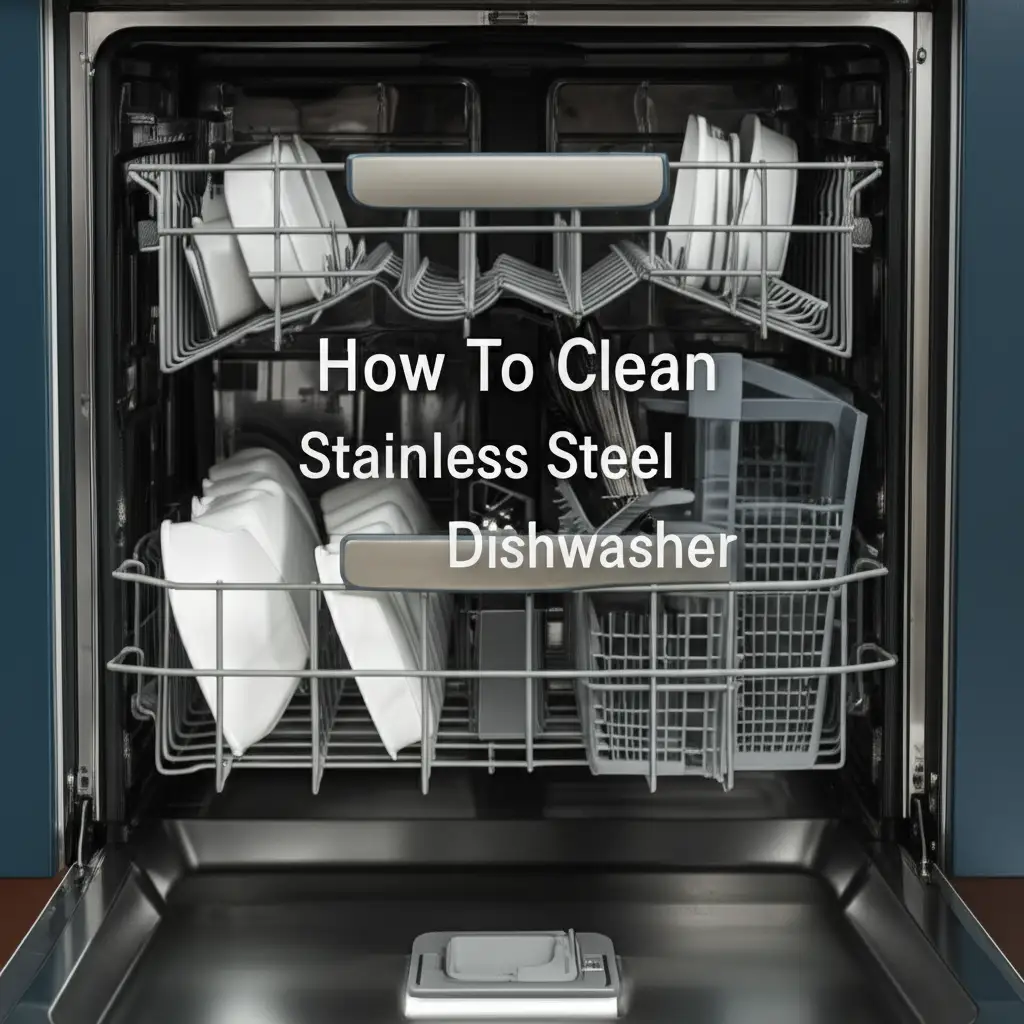· Appliance Care · 17 min read
How To Clean Lg Dryer

Unlock Peak Performance: How To Clean Your LG Dryer
Is your LG dryer taking longer to dry clothes? Do your freshly laundered items come out with a strange smell? These issues often point to one simple solution: your dryer needs a good cleaning. Learning how to clean LG dryer components is essential for maintaining its efficiency, extending its lifespan, and preventing potential fire hazards. A well-maintained dryer not only saves energy but also ensures your clothes are truly clean and fresh.
In this comprehensive guide, I will walk you through every step of cleaning your LG dryer. We will cover routine maintenance like the lint trap and go deeper into the drum, moisture sensors, and crucial vent system. Prepare to restore your LG dryer to its optimal working condition.
Takeaway:
- Regularly clean the lint filter after every load to maintain airflow.
- Deep clean the dryer drum and moisture sensors to ensure proper drying.
- Periodically clean the dryer vent system to prevent fire hazards and improve efficiency.
- Gather necessary tools and disconnect power before starting any cleaning process.
To effectively clean an LG dryer, consistently empty the lint filter after each use. Periodically, deep clean the dryer drum with mild soap and water, wipe down the moisture sensors with rubbing alcohol, and thoroughly clear the exhaust vent system of lint buildup. These steps maintain performance, prevent hazards, and extend the appliance’s life.
Why Cleaning Your LG Dryer Matters for Performance and Safety
You rely on your LG dryer to efficiently dry your clothes, but did you know a dirty dryer can cause serious problems? Neglecting regular cleaning can lead to higher energy bills, longer drying times, and even a fire risk. Lint buildup is the primary culprit behind most dryer issues. It restricts airflow, making the dryer work harder and increasing the internal temperature.
A clean dryer runs much more efficiently. It dries clothes faster, uses less energy, and puts less strain on its internal components. This means your appliance lasts longer and performs better over time. Beyond efficiency, safety is a huge concern. Lint is highly flammable, and accumulated lint in the dryer vent or around the heating element is a leading cause of household fires. By understanding how to clean LG dryer components, you directly address these risks.
Moreover, a dirty dryer can leave your clothes smelling musty or leave behind stubborn stains. Residue from fabric softeners, dryer sheets, or even dirt from clothes can build up inside the drum and on sensors. This buildup affects drying performance and the freshness of your laundry. Taking the time to clean your dryer is an investment in your home’s safety, your appliance’s longevity, and the quality of your clothes.
Essential Tools and Preparations for LG Dryer Cleaning
Before you begin the cleaning process, gathering the right tools makes the job much easier and safer. You do not need many specialized items, but having them ready prevents interruptions. Safety is always first when working with appliances. Always unplug your LG dryer from the power outlet before performing any cleaning or maintenance. This simple step prevents electrical shocks and accidental starts.
Here is a list of the essential tools I recommend having on hand:
- Vacuum cleaner with hose attachments: Essential for removing loose lint from various crevices.
- Lint brush or dryer vent cleaning kit: A long, flexible brush or specialized kit is vital for reaching deep into the lint trap housing and vent duct.
- Microfiber cloths or soft rags: For wiping down surfaces and applying cleaning solutions.
- Mild dish soap or all-purpose cleaner: For cleaning the dryer drum and exterior.
- Rubbing alcohol: Ideal for cleaning sensitive moisture sensors.
- Bucket of warm water: For rinsing cloths.
- Screwdriver (Philips head and/or flathead): May be needed to access some panels or remove vent clamps.
- Work gloves: Protect your hands from dirt and cleaning solutions.
After gathering your tools, move your dryer away from the wall to access the rear vent connection. Ensure good ventilation in the area, especially if you use cleaning solutions. Taking these preparatory steps ensures a smooth and effective cleaning experience for your LG dryer.
Step-by-Step Guide: Cleaning Your LG Dryer’s Lint Filter
The lint filter is the most frequently cleaned part of your LG dryer, and for good reason. It catches lint from your clothes, preventing it from building up in the dryer’s exhaust system. A clogged lint filter drastically reduces drying efficiency and poses a significant fire hazard. You should clean it after every single load of laundry. It only takes a few seconds and makes a huge difference.
Here is how to properly clean your LG dryer’s lint filter:
- Locate and Remove the Filter: The lint filter on LG dryers is typically located just inside the dryer door opening, either in the lower front or on top of the dryer. Simply pull it straight out to remove it.
- Remove Visible Lint: Peel off the accumulated layer of lint by hand. You might be surprised how much lint collects even after one load. Dispose of this lint in a trash can, not down a drain, as it can cause clogs.
- Deep Clean Periodically: Even with daily cleaning, a fine film can build up on the screen over time, especially from fabric softener residue. This film reduces airflow.
- To test this, hold the filter under running water. If the water pools on the screen instead of flowing through, it needs a deeper clean.
- Use a soft brush and a small amount of mild dish soap with warm water to gently scrub both sides of the filter.
- Rinse it thoroughly under running water until all soap residue is gone and water flows freely through the mesh.
- Allow the filter to air dry completely before placing it back into the dryer. A damp filter can create a musty smell.
- Clean the Filter Housing: While the filter is out, use your vacuum cleaner’s hose attachment to remove any lint and debris that has collected in the filter’s housing. Reach as far down into the housing as possible to clear any loose lint. This helps ensure that the dryer’s internal components remain free of excessive lint accumulation. Neglecting this area can still lead to reduced airflow and potential issues.
Regular cleaning of your lint filter is the easiest way to maintain your LG dryer’s efficiency and prevent issues. It extends the life of your appliance and keeps your clothes drying quickly and safely.
Deep Clean the Dryer Drum and Interior Surfaces
The dryer drum is where all the action happens, and it can accumulate dirt, residue, and even stubborn stains over time. Fabric softener, dryer sheets, and even items left in pockets can leave marks or odors inside the drum. A thorough deep clean of the drum and interior ensures your clothes come out fresh and clean. This process also helps remove any strange smells that might transfer to your laundry. This is a great time to tackle any mishaps, such as marks left by pens or crayons. You can find detailed instructions for specific stains by checking resources like how to clean crayon out of dryer or how to clean pen ink out of a dryer.
Here is how to give your LG dryer drum a proper clean:
- Inspect the Drum: First, look for any visible lint, debris, or foreign objects. Remove anything you find. Check for any sticky residues or dark marks on the drum walls. Sometimes, items like chewing gum can get stuck and require special attention; for tips on this, refer to how to clean gum out of a dryer.
- Prepare a Cleaning Solution: Mix a small amount of mild dish soap with warm water in a bucket. Alternatively, you can use a solution of white vinegar and water (equal parts) for a natural deodorizing clean. Avoid harsh abrasive cleaners or steel wool, as these can scratch the drum’s finish.
- Wipe Down the Interior: Dip a clean microfiber cloth into your cleaning solution, wring it out so it is damp, not dripping, and wipe down the entire inside surface of the dryer drum. Pay special attention to any stained areas or sticky spots. You might need to apply a bit more pressure or let the solution sit on stubborn marks for a few minutes. If you notice any burnt spots on grates or other metal parts, similar methods can be found at how to clean burnt dryer grate.
- Rinse and Dry: After cleaning, use a fresh cloth dampened with plain water to wipe down the drum again. This removes any soap residue. Then, use a dry, clean cloth to thoroughly dry the interior of the drum. Leaving moisture can lead to rust or mildew.
- Deodorize (Optional): If a musty smell lingers, place a few old towels dampened with white vinegar inside the dryer. Run the dryer on a no-heat or air-fluff cycle for 15-20 minutes. The vinegar helps neutralize odors. Afterward, wipe the drum dry again.
Regularly cleaning the drum keeps your laundry smelling fresh and extends the life of your LG dryer. This simple process prevents residue buildup from affecting your clothes. For general guidance on internal cleaning, you can also look at how to clean inside dryer drum.
Maintain Efficiency: Cleaning Your LG Dryer’s Moisture Sensor
Modern LG dryers use moisture sensors to detect when clothes are dry and automatically shut off the cycle. This feature saves energy and prevents over-drying, which can damage fabrics. However, these sensors can become coated with residue from dryer sheets and fabric softeners. When this happens, the sensors cannot accurately detect moisture, leading to clothes still being damp at the end of a cycle, or the dryer running for too long. Cleaning these sensors is a quick task that significantly impacts your dryer’s performance.
Here is how to clean your LG dryer’s moisture sensors:
- Locate the Sensors: On most LG dryers, moisture sensors are small metal strips or bars located inside the dryer drum. They are usually found on the front bulkhead of the drum, just below the lint trap opening or near the drum’s front edge. There are typically two or three of these strips.
- Prepare for Cleaning: Ensure your dryer is unplugged from the power source for safety. You will need a clean microfiber cloth or a cotton swab and some rubbing alcohol. Avoid using anything abrasive, as you could damage the sensors.
- Wipe the Sensors: Lightly dampen your cloth or cotton swab with rubbing alcohol. Gently wipe down each metal sensor strip. You might see a visible film or residue come off onto the cloth. Continue wiping until the metal strips look clean and shiny. The rubbing alcohol effectively dissolves the waxy buildup without leaving any residue itself.
- Allow to Dry: Allow a few minutes for the rubbing alcohol to evaporate completely before plugging the dryer back in. It dries very quickly, so this step takes only a moment.
By regularly cleaning the moisture sensors (every few months or whenever you notice issues with drying), you ensure your LG dryer operates as intended. This simple maintenance step keeps your drying cycles efficient and your clothes perfectly dry every time. For comparative understanding, similar cleaning principles apply to other brands, such as when you consider how to clean moisture sensor on Samsung dryer or how to clean Bosch dryer moisture sensor.
Crucial Step: Cleaning Your LG Dryer’s Vent System
Cleaning your LG dryer’s vent system is perhaps the most critical maintenance task for both efficiency and safety. The vent system, which includes the ductwork leading from your dryer to the outside, carries hot, moist air and lint away from your appliance. Over time, lint accumulates in these ducts, restricting airflow, increasing drying times, and significantly raising the risk of a dryer fire. A clogged vent also puts extra strain on your dryer’s motor and heating element, shortening its lifespan.
I strongly recommend cleaning your dryer vent at least once a year, or more frequently if you use your dryer heavily or have a long vent run. You can clean the vent from both inside and outside your home. Many resources exist to help with this, including guides on how to clean dryer vent from outside with drill or even how to clean dryer vent with a leaf blower.
Here is a general approach to cleaning your LG dryer’s vent system:
- Disconnect the Dryer: Unplug your dryer from the wall outlet. Carefully pull the dryer away from the wall to access the rear.
- Disconnect the Vent Hose: Loosen the clamp that holds the flexible dryer vent hose to the back of the dryer and to the wall vent. Gently pull the hose free from both connections. Be careful not to damage the hose.
- Clear the Flexible Hose: Take the flexible hose outside. Shake out any loose lint. If it is heavily clogged, use a long, narrow brush or a vacuum cleaner attachment to clear it thoroughly. Inspect the hose for damage; replace it if it is kinked, crushed, or torn, as smooth airflow is crucial.
- Clean the Dryer’s Exhaust Port: Use a vacuum cleaner with a narrow attachment to clean out the exhaust port on the back of the dryer itself. Reach in as far as you can to remove any lint buildup.
- Clean the Wall Vent Duct: This is the main part of the vent system. You will need a specialized dryer vent cleaning brush kit, which usually includes several rods that connect to reach deep into the duct.
- From the inside: Insert the brush into the wall vent opening and push it in, rotating it to dislodge lint. Work the brush back and forth, extending the rods as needed, until you reach the outside opening.
- From the outside: If you have an accessible exterior vent cap, you can also clean from this end. Remove the cap and use the brush to push lint towards the inside or vacuum it out. For roof vents, special considerations apply; see how to clean dryer vent on roof for specific guidance.
- Throughout this process, run your vacuum cleaner at the opposite end of the vent to suck up dislodged lint as it comes out.
- Reassemble and Test: Once the vent duct is clear, reattach the flexible hose securely to both the dryer and the wall vent using the clamps. Push the dryer back into place, plug it in, and run a short cycle (e.g., air fluff) to confirm proper airflow and ensure no unusual noises.
Regularly cleaning your LG dryer’s vent system is a vital safety measure that also maximizes your dryer’s performance and energy efficiency. Do not skip this crucial step in your dryer maintenance routine.
Exterior Care and Final Checks for Your LG Dryer
While the internal cleaning of your LG dryer is crucial for performance and safety, giving the exterior some attention also keeps it looking good and functioning properly. A clean exterior contributes to a tidy laundry space and ensures easy operation of the control panel. After you have tackled the lint trap, drum, sensors, and vent, a final external wipe-down completes the comprehensive cleaning process.
Here is how to care for the exterior and perform final checks:
- Wipe Down the Exterior Surfaces:
- Mix a small amount of mild all-purpose cleaner or dish soap with warm water in a spray bottle or bucket.
- Dampen a clean microfiber cloth with the solution.
- Wipe down the top, sides, and front of your LG dryer. Pay attention to any smudges, spills, or dust accumulation.
- For stainless steel finishes, use a specialized stainless steel cleaner and wipe in the direction of the grain to avoid streaks.
- Clean the Control Panel and Knobs:
- Lightly dampen a clean cloth with plain water or a very mild cleaning solution.
- Carefully wipe the control panel. Avoid spraying water directly onto the panel, as moisture can damage electronic components.
- Use a cotton swab to clean around the edges of buttons and knobs if they are recessed.
- Dry the panel thoroughly with a clean, dry cloth.
- Inspect the Door Seal:
- Open the dryer door and inspect the rubber gasket or seal around the opening.
- Wipe away any lint, dust, or residue that may have collected on the seal. This prevents lint from building up in this area and ensures a tight seal during operation.
- Check for any tears or damage to the seal, which could affect efficiency.
- Check the Power Cord and Plug:
- Visually inspect the power cord for any frayed wires or damage.
- Ensure the plug is firmly seated in the wall outlet. Never use an extension cord with a dryer.
- Return Dryer to Position: Gently push the dryer back into its place, ensuring there is enough clearance behind it for proper ventilation if it is a vented model. Do not push it so far that it kinks the vent hose.
By following these exterior care and final check steps, your LG dryer will not only perform efficiently but also look its best. This complete cleaning approach ensures every part of your appliance is in top condition.
FAQ Section
How often should I clean my LG dryer’s lint filter?
You should clean the lint filter after every single load of laundry. This small, consistent step is the most important one. It prevents lint buildup, keeps your dryer efficient, and drastically reduces fire risk. Daily cleaning ensures optimal performance.
What cleaning products are safe to use inside my LG dryer?
For the dryer drum, use a mild solution of dish soap and warm water, or a 50/50 mix of white vinegar and water. For moisture sensors, rubbing alcohol on a soft cloth works best. Always avoid harsh chemicals, abrasive cleaners, or steel wool, as they can damage surfaces.
Can I clean my LG dryer’s vent system myself, or do I need a professional?
You can certainly clean your dryer vent yourself using a specialized dryer vent cleaning kit, especially if your vent run is relatively short and straight. For very long, complex, or inaccessible vent runs, or if you are unsure, hiring a professional is a safer and more thorough option.
How do I know if my LG dryer vent is clogged?
Common signs of a clogged dryer vent include clothes taking longer to dry, clothes feeling unusually hot after a cycle, the dryer itself feeling very hot to the touch, and a burning smell coming from the dryer. Increased humidity in the laundry room is also a clear indicator.
What if my LG dryer still smells musty after cleaning?
If a musty smell persists, deep clean the drum again with a vinegar solution. You can also run an empty cycle with a few vinegar-dampened cloths. Ensure the dryer vent is thoroughly clean, as hidden mold or mildew in the ductwork can cause odors. Check for any standing water in the drain hose if it’s a condenser dryer.
How do I clean a LG condenser dryer’s heat exchanger or condenser unit?
For LG condenser dryers, regularly clean the condenser unit or heat exchanger, usually located behind a small door at the bottom. Consult your dryer’s manual for specific instructions, as the process varies by model. Typically, you remove the unit, rinse it under running water to clear lint, and allow it to dry before reinserting.
Conclusion
Taking the time to regularly clean your LG dryer is one of the smartest investments you can make in your home’s safety and appliance longevity. We have explored every crucial area, from the essential daily task of emptying the lint filter to the critical annual maintenance of the dryer vent system. By understanding how to clean LG dryer components such as the drum, moisture sensors, and exhaust system, you ensure peak performance.
A clean dryer dries clothes faster, uses less energy, and significantly reduces the risk of lint-related fires. It also keeps your laundry smelling fresh and extends the life of your valuable appliance. Make these cleaning tasks a regular part of your home maintenance routine. Your clothes, your energy bill, and your peace of mind will thank you. Start your LG dryer cleaning journey today and enjoy the benefits of a well-maintained machine.
- how to clean LG dryer
- dryer cleaning tips
- LG appliance maintenance
- lint trap cleaning
- dryer vent cleaning
- drum cleaning
- moisture sensor cleaning




